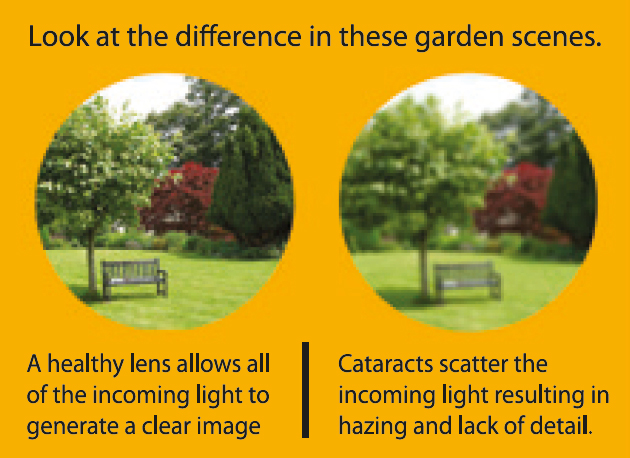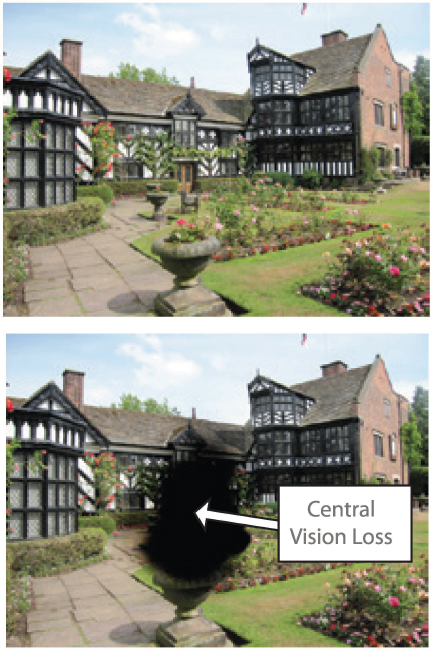Blepharitis

This is a condition where the eyelid is inflammed, severity is normally worse in the mornings when you wake up. Symptoms include:
- Redness of eyelids
- Crusting around eyelashes
- Irritating, gritty dry eyes
- Itchy, burning sensation
- Vision can be reduced
Blepharitis is normally a longstanding condition, but onset can be acute and can last a few weeks. There are many lidcare products available for the treatment of blepharitis, but for more severe cases oral antibiotics maybe needed.
Dry eyes
Dry eye is a very common problem especially in the elderly population, sypmtoms include:
- Burning sensation
- Foriegn body sensation
- Gritty, sandy eyes
- Watery eyes
Dry eyes are caused by deficient tear production and or increased evaporation of the tear film layer. The tear film is the layer that covers the cornea (this is the clear part at the front of the eye). Articial tears and or lubricant ointments can be used daily for treatment.
Diabetes and your eyes

Diabetic retinopathy is a condition that can effect anyone who has diabetes. Diabetic retinopathy in its early stages can have no symptoms, it is therefore very important that regular sight tests are carried out for all patients.
Diabetic retinopathy is when the blood vessels within retina get damaged and start to leak. If diabetic retinopathy is left untreated, loss of vision can result.
Glaucoma

Glaucoma is a condition in which the optic nerve (optic nerve connects the eye to the brain) is damaged, which leads to slow progressive irreversible vision loss.
Glaucoma can be divided into 2 categories:
- Closed Angle Glaucoma: Occurs suddenly, intra-ocular pressures rise rapidly and the eye becomes red, painful and the patient suffers from nausea and vomiting. Vision loss can occur quickly, but the discomfort leads patients to seek immediate medical attention. Anyone suffering from the acute form of glaucoma should go straight to hospital. Treatment can control and bring the intra-ocular pressure down within hours.
- Open Angle Glaucoma: This type of Glaucoma is chronic, there is no pain and vision seems to be normal, but a visual fields test can detect defects. If open angle Glaucoma is left untreated, it can lead to blindness, therefore regular sight tests are vital.
Glaucoma can be detected in 3 main ways:
- Viewing of the optic nerve at the back of the eye.
- Measuring the intra-ocular pressure of the eye.
- Checking the peripheral vision, using a visual fields machine.
Early detection can control the disease, it is done by an Ophthalmologist at the hospital, who will prescribe drops to reduce and control the pressure of the eyes and stop optic nerve damage. Others treatments including operations maybe needed if drops dont work.
Anyone diagnosed with Glaucoma are advised to inform their direct family members, as glaucoma can be hereditary.
Cataracts


Cataracts occur when the lens in the eye starts to go cloudy, which causes cloudy, hazy reduced vision. There are various causes of cataracts including medication. Diabetes, but age related cataracts being the most common.
Cataracts vary from mild to severe, many people live with mild cataracts through out later life without any major symptoms, but for patients with moderate to severe cataracts, treatment is easily available at the hospital. Your optometrist can refer you for treatment, which only takes a Vi days visit to the hospital, with one further visit a few weeks later before being discharged.
Cataracts can cause glare from bright light sources, which can be treated by using a slight tint added to spectacle lenses.
Macular degeneration


Macular degeneration is normally age related, it causes damage to the central part of the retina called the macula. The macula gives you the most central and fine detailed part of your vision.
Patients who suffer from macular degeneration may find difficulty in recognising people's faces, reading and may find straight lines wavy. Macular degeneration only affects the central vision, peripheral vision is generally intact.
There are 2 types of Macular degeneration:
- Dry Macular Degeneration: For most people there is no cure for this type of macular degeneration, but eating healthy, green leafy vegetables, carrots, ceasing smoking, protecting your eyes from damaging UV light by wearing sunglasses and taking vitamin supplements for the eye can all slow the progression of the disease. Dry Macular Degeneration normally occurs slowly and gradually and is the most common form of Macular Degeneration.
- Wet Macular Degenertion: This occurs quickly, when new blood vessels start growing behind the central part of the retina and then start to leak, causing scarring, which can lead to central vision loss.
Because of the sudden onset of symptoms, rapid treatment is necessary. Lucentis is one of the treatments, which involves injections into the affected eye for a number of weeks.
